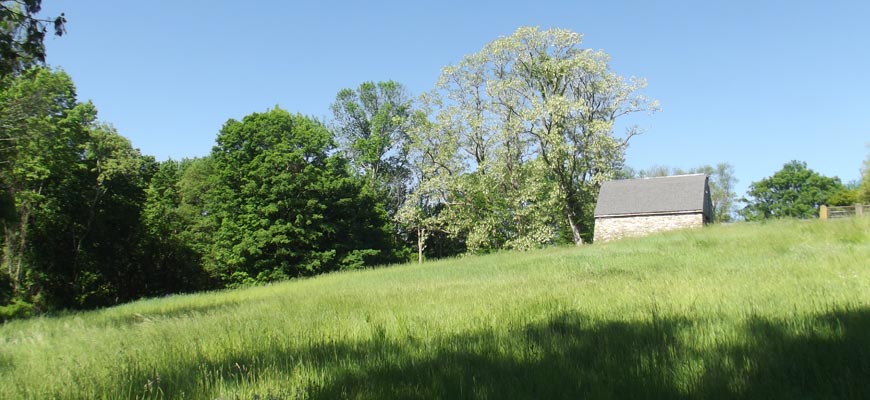- Botany Activities- making a dichotomous key; making a herbarium specimen; identifying grasses, sedges and rushes
- Point-Quarter Analysis- a field study that yields quantitative data on forest community composition, tree density and relative species importance via the plotless point-quarter technique.
- Point-Quarter Analysis Calculator- an Excel spreadsheet that will calculate each step of the point-quarter analysis lab- just replace the sample data with your own.
- Guide to Blackstone River Valley Trees- a companion to the point-quarter analysis lab; it provides an identification guide to 33 characteristic trees of the Blackstone River valley.
- Population Estimation- laboratory mark-recapture data are gathered to generate population estimates. The Lincoln-Peterson and Jolly-Seber methods are compared.
- Population Growth- a laboratory investigation for examining rates of population growth and fitting data to theoretical growth models.
- Stream Macrofaunal Communities- a lab and field investigation that compares the invertebrate communities of two streams and relates differences found to physical and chemicals differences present in the streams.
- Variable Circular Plot- a field study that yields quantitative data on forest bird populations and forest habitats. Survey data are converted to population estimates with the freely available Distance 6.0 software.
- Data for Distance 6.0- Data are available here that can be appended with locally gathered data to provide adequate samples for conducting the VCP lab above. It is appropriate for northeastern U.S. birds and can be imported directly into Distance.
- Scientific writing primer and lab report rubric- step-by-step instructions for preparing a laboratory report in scientific paper format. A separate evaluation form for use by both students and teachers is included.
- Tomato growth- performs a classical agricultural experiment in which fertilizer and water levels are varied. Basic statistical terminology is reviewed and data are analyzed with a factorial analysis of variance.
- Habitat management- provides an overview of and example links for habitat management, bird-banding and other research activities at the field station of Bird Conservation Research, Inc.
- Restoring habitats and tidal wetlands as wildlife habitat- examines 1) habitat restoration of a woodland border and old field, and 2) the characteristics of a freshwater tidal wetland of the Connecticut River.
|

